Be the Einstein of your office, the da Vinci of your domain
Think of the habits of creative people you know:
Merrell Grant, a TWC colleague, gets a TED talk in her email box everyday for a jolt of inspiration.
A CEO I know swears by exercise. A swim, a run, a bike ride – and suddenly new ideas start clicking.
A writer friend has trained herself to pick up insights when she least expects them – watching TV and movies – discovering metaphors and examples that relate to challenges in the world of work.
Vacations seem to be the ticket for a colleague. The distance gives fresh perspective – “I get my best ideas at the beach.”
With this newsletter, we look at a wide range of ways to cultivate the creative and innovative thinking it takes to succeed in rapidly changing times.
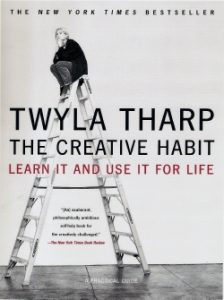 In her book “The Creative Habit: Learn It and Use It For Life,” the great choreographer (and businesswoman) Twyla Tharp underscores the ways creativity matters for all of us – not just folks involved in creating works of art:
In her book “The Creative Habit: Learn It and Use It For Life,” the great choreographer (and businesswoman) Twyla Tharp underscores the ways creativity matters for all of us – not just folks involved in creating works of art:
“It’s for businesspeople looking for a new way to close a sale; it’s for engineers trying to solve a problem; it’s for parents who want their children to see the world in more than one way.”
It’s also important for entrepreneurs guiding companies, managers shaping teams and individuals scouting new jobs or careers.
Today creativity is more important than ever, says psychologist Daniel Goleman in his new book “Focus: The Hidden Driver of Excellence.”
With so much information at everyone’s fingertips, he says, “new value arises … putting ideas together in novel ways and asking smart questions that open up untapped potential.”
The result is creative insight, says Goleman, whose book also includes an excellent discussion of “top-down” linear thinking and “bottom-up” thinking in the mind’s “back stage.”
So The Wunderlin Company’s holiday gift to you: 10 ideas to spark more innovative ideas and practices in the year ahead.
Some are as simple as picking up a new magazine. Other suggest new ways of operating that we are likelier to tackle gradually … if they hold appeal… in this season of new year resolutions.
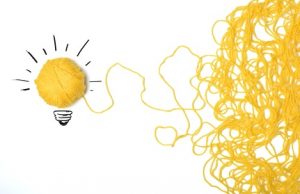 1. Say goodbye to thunderbolts and hello to the habit of hard work. Once upon a time, the idea of creativity was simple: a divine spirit ignited the imagination of the gifted artist or scientist. Zap… the thinking went … and the anointed one sketched a patentable mechanism or ingenious tome. The reality: discipline and hard work set the stage for creative work. The best ideas thrive in a life with structure. In her popular TED talk, best-selling writer Elizabeth Gilbert describes getting up the same time every day and “working like a mule.” Twyla Tharp’s daily routine starts with pre-dawn workouts. “No one is born with skill,” she says. “It is developed through exercise, through repetition, through a blend of learning and reflection that’s both painstaking and rewarding.” Debunking the “myth” that “creativity just happens,” Cecilia Conrad of the MacArthur Fellows Program, also known as “genius grants,” says, “In fact, virtually all fellows have invested years honing their expertise, and many have overcome obstacles to projects that have later defined new frontiers . . . Fellows have told us about being on the verge of quitting — selling the piano or leaving academic research for a commercial lab — when they got our call.”
1. Say goodbye to thunderbolts and hello to the habit of hard work. Once upon a time, the idea of creativity was simple: a divine spirit ignited the imagination of the gifted artist or scientist. Zap… the thinking went … and the anointed one sketched a patentable mechanism or ingenious tome. The reality: discipline and hard work set the stage for creative work. The best ideas thrive in a life with structure. In her popular TED talk, best-selling writer Elizabeth Gilbert describes getting up the same time every day and “working like a mule.” Twyla Tharp’s daily routine starts with pre-dawn workouts. “No one is born with skill,” she says. “It is developed through exercise, through repetition, through a blend of learning and reflection that’s both painstaking and rewarding.” Debunking the “myth” that “creativity just happens,” Cecilia Conrad of the MacArthur Fellows Program, also known as “genius grants,” says, “In fact, virtually all fellows have invested years honing their expertise, and many have overcome obstacles to projects that have later defined new frontiers . . . Fellows have told us about being on the verge of quitting — selling the piano or leaving academic research for a commercial lab — when they got our call.”
2. Treat yourself well: Your body is the machine for creativity. If you search out studies on creativity, you find a dizzying range of information on activities that seem to encourage the flow of innovative ideas. Yes, showers provide a perfect mix of relaxation and stimulation. The same for exercise, says Christopher Bergland in Psychology Today: “Sweat is like WD-40 for your mind.” A cup of coffee or a beer: also good. Try less quiet places like the hum of noise in a coffee shop. Get enough sleep. Read literary fiction – new research shows it enriches empathy and amps up social intelligence. Consider mindfulness meditation. Your time each day should be a mix of structure – and white space so your mind can wander. So as you consider your 2014 new year resolutions, ask yourself what new habits might be good for you, and good for your creative output.
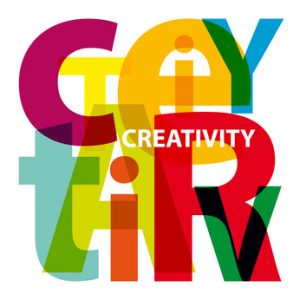 3. Mix it up. Diverse experiences pave the way to fresh ideas. “Creativity is just connecting things,” Apple’s Steve Jobs liked to say. “Unfortunately,” he added, “a lot of people…haven’t had very diverse experiences. So they don’t have enough dots to connect.” Grab a book off a different best-seller list. Add a new blog to your reading list. Check out new websites. Wander off your usual path to attend author forums, watch a new sport or check out a new artist. Hike new trails, paddle new rivers, join a new gym. Trust that the mix will pay off in ways that are not clear or linear. And make conversation along the way with folks who are not just like you, says psychologist R. Keith Sawyer, author of “Explaining Creativity: The Science of Human Innovation.” A believer in “cognitive diversity,’ he says it’s important to cross-pollinate with people in different fields. “Research and anecdotal evidence suggest that distant analogies lead to new ideas—like when a heart surgeon bounces things off an architect or a graphic designer.”
3. Mix it up. Diverse experiences pave the way to fresh ideas. “Creativity is just connecting things,” Apple’s Steve Jobs liked to say. “Unfortunately,” he added, “a lot of people…haven’t had very diverse experiences. So they don’t have enough dots to connect.” Grab a book off a different best-seller list. Add a new blog to your reading list. Check out new websites. Wander off your usual path to attend author forums, watch a new sport or check out a new artist. Hike new trails, paddle new rivers, join a new gym. Trust that the mix will pay off in ways that are not clear or linear. And make conversation along the way with folks who are not just like you, says psychologist R. Keith Sawyer, author of “Explaining Creativity: The Science of Human Innovation.” A believer in “cognitive diversity,’ he says it’s important to cross-pollinate with people in different fields. “Research and anecdotal evidence suggest that distant analogies lead to new ideas—like when a heart surgeon bounces things off an architect or a graphic designer.”
4. ‘Little bets’ can lead to long-term progress. Use experiments and trial balloons to test your way to a big challenge. In his book, “Little Bets: How Breakthrough Ideas Emerge from Small Discoveries,” Peter Sims describes the way comedian Chris Rock builds a new hour-long routine by floating hundreds of jokes before audiences at small comedy clubs – 40 or 50 gigs over six months or more. The jokes that work … get polished. The ones that don’t…are quickly disgarded. Rapid prototyping has long been a best practice for reducing product-development cycle time: Get something ou t there to which customers can react and then improve it as you go along to open up the channel for creativity. get polished. Bite-sized challenges are the subject of a well-known essay by Anne Lamott. Her brother, overwhelmed by a school project about birds that he had delayed to the last minute, gets advice from his father: “Bird by bird, buddy, just take it bird by bird.”
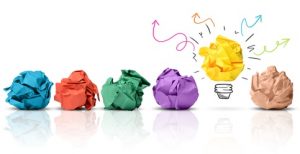 5. Hold that thought. So you get a great idea on a walk, in the garden, in the car… and when you get to your desk…poof, it’s gone. The analog solution: small notepads kept in strategic locations – pocket, bedside, gym bag and car. The digital: Use your phone’s notes or recording features. Our favorite is Evernote, the app for your phone or iPad. features. A phrase, an image, a book mentioned on the radio… make a note of anything that interests you. Have a bigger project in mind? Start a file, folder or box where you can stash ideas, clips, links, photos, artwork for future consideration. I see what you mean. Have you ever noticed how a great metaphor takes root and helps people get a point quickly and remember it? The heart of a metaphor is that it compares something that may be complex … to something concrete that you can see in your mind. “It’s like drinking from a fire hose,” for example, or “Teaching someone to fish instead of fishing for them.” Make it a personal goal to find metaphors that capture your ideas well. Search online – the flea market of ideas. Brainstorm with friends or a good thesaurus. Graphic mind-mapping is also a great tool for tracking ideas. Get a taste of the technique from David and Tom Kelley, brothers, founders of the company IDEO, and authors of “Creative Confidence: Unleashing the Creative Potential Within Us All.”
5. Hold that thought. So you get a great idea on a walk, in the garden, in the car… and when you get to your desk…poof, it’s gone. The analog solution: small notepads kept in strategic locations – pocket, bedside, gym bag and car. The digital: Use your phone’s notes or recording features. Our favorite is Evernote, the app for your phone or iPad. features. A phrase, an image, a book mentioned on the radio… make a note of anything that interests you. Have a bigger project in mind? Start a file, folder or box where you can stash ideas, clips, links, photos, artwork for future consideration. I see what you mean. Have you ever noticed how a great metaphor takes root and helps people get a point quickly and remember it? The heart of a metaphor is that it compares something that may be complex … to something concrete that you can see in your mind. “It’s like drinking from a fire hose,” for example, or “Teaching someone to fish instead of fishing for them.” Make it a personal goal to find metaphors that capture your ideas well. Search online – the flea market of ideas. Brainstorm with friends or a good thesaurus. Graphic mind-mapping is also a great tool for tracking ideas. Get a taste of the technique from David and Tom Kelley, brothers, founders of the company IDEO, and authors of “Creative Confidence: Unleashing the Creative Potential Within Us All.”
7. “Yes and…” If you have participated in meetings we facilitate, you are familiar with the ground rule of using “yes” instead of “but.” Turns out “yes and…” is helpful for creativity, too. Try “plussing” the next time you are working on a problem in a group. A strategy from improv theater used by animation wizards at Pixar, plussing aims to help teams improve ideas without negative judgment, says Peter Sims. He shares this example: An animator working on a character shares rough sketches and ideas. “Instead of criticizing the sketch or saying ‘no,’ the director will build on the starting point by saying something like, ‘I like Woody’s eyes, and what if his eyes rolled left?’” Using words like “and” or “what if,” rather than “but” is a way to offer suggestions and allow creativity to flow without fear.
8. A TED talk a day keeps boredom at bay. We never miss Louisville’s Idea Festival — in fact, the next one, Sept. 30-Oct. 4, is already on the calendar. Its wide-ranging mix of speakers never fails to deliver new insights. If you, too, appreciate this kind of food for thought, also consider Chicago’s Ideas Week (Oct. 13-19) and Aspen’s Ideas Festival (June 24-July 3) – you can sample their offerings online. As for TED, this world-wide network of idea-sharing offers a huge inventory of short, lively presentations accessible anytime. To get a daily email with a TED talk, subscribe here. To check out more than 100 TED presentations that explore aspects of creativity, click here.
9. Plan your next vacation now. To keep yourself fresh, buck the culture that suggests you are too indispensible to take a break from work. The U.S. tradition of skimpy vacations is a false badge of honor, says a Forbes article. Salesforce CEO Marc Benioff regularly took month-long vacations in Hawaii “just to relax” when he was at Oracle – a practice that he saids “opened up my career to new ideas, perspectives and directions.” Tony Schwartz of The Energy Project advocates “strategic renewal” and says “more vacation is the secret sauce” to creative work – with time to relax as the vacation begins and time for fresh ideas to flow as it ends.
 10. Tis the season for creative gift-giving. Embrace gifts for friends, family (and yourself) that enrich creative potential. Give subscriptions to magazines off the usual grid, whether it’s Scientific American, Mental Floss, The Economist or Funny Times. Consider books like Charles Duhrigg’s “The Power of Habit: Why We Do What We Do in Life and in Business;” Goleman’s “Focus;” Nicholas Carr’s “The Shallows: What the Internet is Doing to our Brains;” “How Children Succeed” by Paul Tough; and Malcolm Gladwell’s “David and Goliath: Underdogs, Misfits and the Art of Battling Giants.” Give tickets to plays, sporting events and concerts. Consider art, cooking, tai chi, yoga or meditation classes – and don’t stint on music lessons. A recent New York Times essay — “Is Music the Key to Success?” – says many high achievers with serious musical backgrounds, from Condoleeza Rice (piano) to Paul Allen (guitar), believe it helped pave the way to more creative thinking in their lives.
10. Tis the season for creative gift-giving. Embrace gifts for friends, family (and yourself) that enrich creative potential. Give subscriptions to magazines off the usual grid, whether it’s Scientific American, Mental Floss, The Economist or Funny Times. Consider books like Charles Duhrigg’s “The Power of Habit: Why We Do What We Do in Life and in Business;” Goleman’s “Focus;” Nicholas Carr’s “The Shallows: What the Internet is Doing to our Brains;” “How Children Succeed” by Paul Tough; and Malcolm Gladwell’s “David and Goliath: Underdogs, Misfits and the Art of Battling Giants.” Give tickets to plays, sporting events and concerts. Consider art, cooking, tai chi, yoga or meditation classes – and don’t stint on music lessons. A recent New York Times essay — “Is Music the Key to Success?” – says many high achievers with serious musical backgrounds, from Condoleeza Rice (piano) to Paul Allen (guitar), believe it helped pave the way to more creative thinking in their lives.
One final thought for 2014
Sometimes the most creative gifts are not ones you buy – but simple messages that strengthen personal connections.
A friend recently showed me a coffee-stained page of snowflake paper with a poem and a hand-written note at the bottom – holiday tidings from a much-beloved friend and community leader, Joan Riehm, who died five years ago.
The poem — Marge Piercy’s “To be of use” – highlights the joy of working hard and well with others.
It begins: “The people I love the best/Jump into work headfirst/Without dallying in the shallows/And swim off with sure strokes/Almost out of sight.”
At the bottom, the short note from Joan offered my friend praise and encouragement.
It meant a lot. My friend has kept it for seven years…and counting. She looks at it once a year at least. For inspiration.
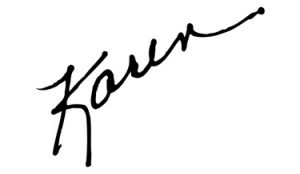

Great tips Karen! Here’s to a fabulous, fun and creative 2014!!
Thanks for this Karen! Loved the ending reference to Joan Riehm as well as the poem. Reminds me of one of my dad’s favorite sayings, “work makes the living sweet.”